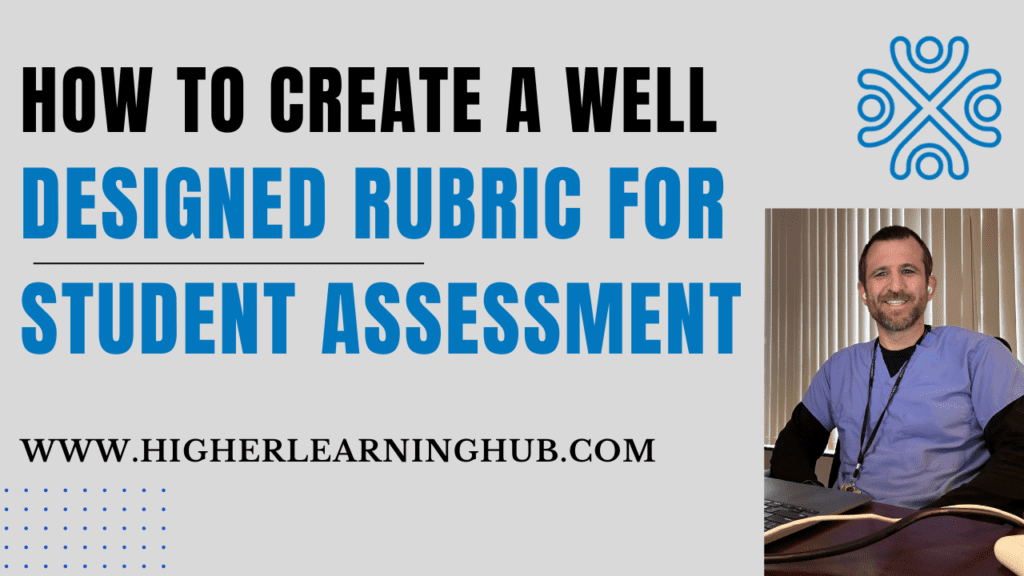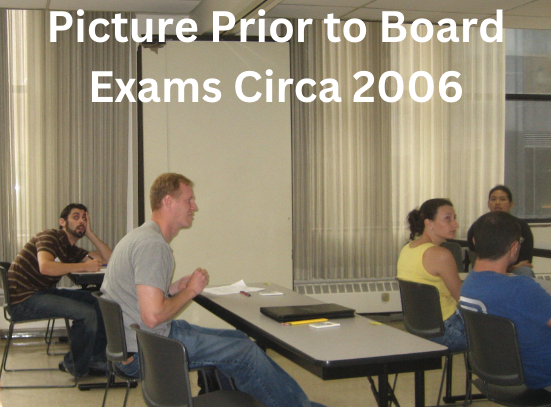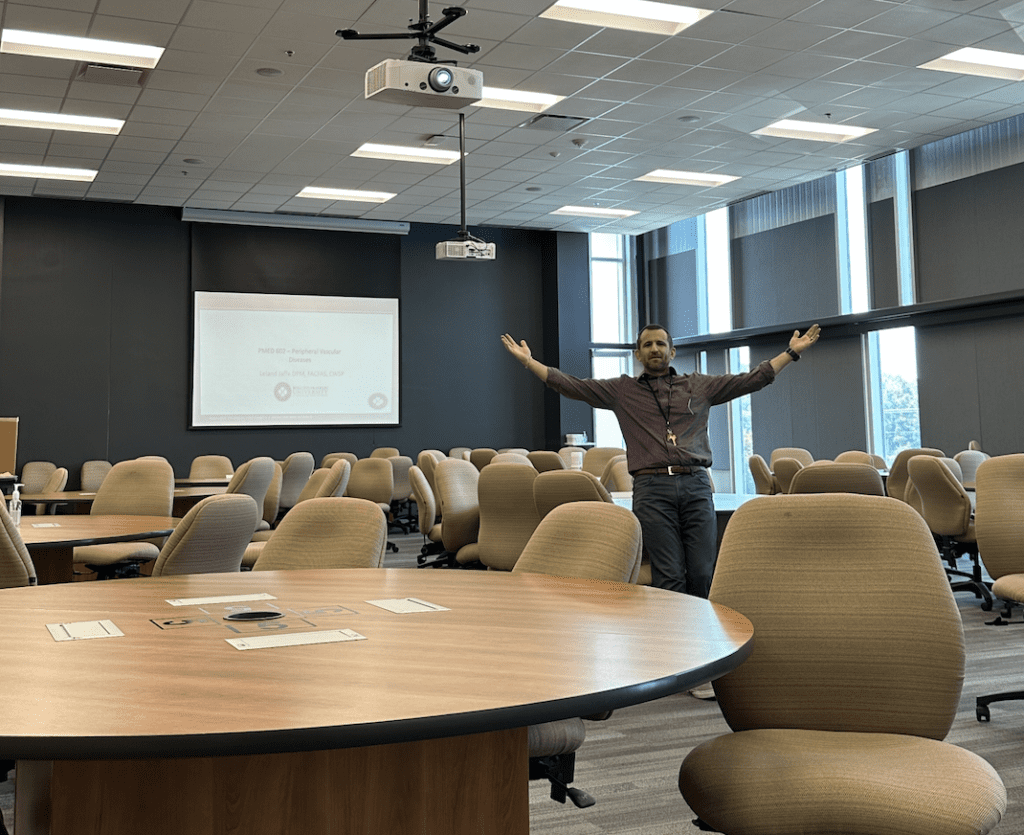Authored by Dr. Leland Jaffe; Associate Dean and Professor, Published on November 1st, 2024
How do you respond when a student leaves a negative review? It’s easy to feel disheartened, but these reviews can actually help educators grow.
Negative feedback, when handled correctly, doesn’t just affect your teaching methods; it can also improve student experiences. Ignoring or mishandling constructive criticism may lead to missed opportunities for enhancements in your teaching practices. Understanding how to manage such reviews is crucial for maintaining a positive learning environment. This post will explore practical strategies to address negative student feedback effectively, helping you turn challenges into strengths.
Understanding Negative Reviews


Handling negative reviews from students can be tough but necessary. Initially, I struggled to read through these reviews, but over time, I learned to utilize this feedback to continue to improve. They provide you with insights into areas needing improvement. These reviews often arise from various contexts and by understanding the types and triggers of negative feedback, you can better address student concerns and enhance your teaching quality.
Types of Negative Reviews
Student feedback can generally be categorized into three main types, each offering different insights to you:
- Performance-Related Reviews: These are critiques about an educator’s teaching effectiveness. Students may comment on the clarity of explanations, pacing of lessons, or engagement during classes. If multiple students mention similar issues, it may spotlight areas where adjustments are necessary. Try not to focus on outliers if a majority of your students found your teaching style effective.
- Interpersonal Reviews: These reviews focus on the educator’s interaction with students. They may highlight issues related to communication style, perceived fairness, or approachability. This type of feedback can be personal, requiring educators to reflect on how they connect with students.
- Feedback on Course Content: This type deals with the curriculum. Complaints may concern the relevance of materials, difficulty level, or the structure of assignments and exams. Students may also comment on a lack of clarity of the learning objectives of a lecture. Such reviews can guide revisions to course content to better meet student needs.
Common Triggers for Negative Reviews
Understanding why students leave negative reviews helps in responding constructively – leading to improvements over time. Students often express dissatisfaction because of:
- Miscommunication: When information isn’t conveyed clearly—be it assignment instructions or course policies—students get frustrated. Effective communication helps reduce these misunderstandings.
- Unmet Expectations: If students perceive a gap between what was promised and what they experienced, it leads to discontent. Clear upfront communication about course outcomes and workload can help manage expectations.
- Teaching Styles: Diverse teaching methods might not resonate with every student. A mismatch between a student’s learning style and the teaching approach can result in negative feedback. Adaptability can help, involving a mix of teaching strategies to cater to varied learners.
While it may be uncomfortable, embracing these insights presents an opportunity to grow and transform the educational process.
Assessing the Review


Receiving a negative review can stir emotions and lead to defensive thoughts – I’ve been there! It’s essential to assess each review with a clear head, striving for improvement rather than reacting impulsively. By carefully evaluating the concerns, educators can identify areas of opportunity and strengths within their teaching methods.
Initial Reaction and Reflection
Once a negative review surfaces, your first instinct might be to react defensively. However, try to adopt an emotional detachment and take a step back. This isn’t just about preserving your peace of mind; it’s about ensuring clarity before you respond.
- Pause before reacting: Let your initial emotions settle. Rushing into a confrontation can exacerbate the situation.
- Reflect on the feedback: Consider the review from a neutral perspective. Ask yourself, “What might have led the student to feel this way?” This reflection allows you to better understand their viewpoint.
By approaching the review with a calm mindset, you set the stage for more constructive outcomes. It’s like stepping outside during a storm; instead of getting drenched, you find a safe spot and observe the rain.
Analyzing the Content of the Review
Once emotions are in check, it’s time to dissect the content. Not all feedback is equal, and not every negative remark requires the same response.
- Identify constructive criticism: Separate useful feedback from complaints that might be less relevant. Constructive criticism offers insight into your teaching methods and areas for growth.
- Spot legitimate concerns: Look for patterns across multiple reviews. Are there consistent themes or issues students highlight? This can indicate areas needing attention, whether it’s curriculum-based or related to personal interactions with your students.
- Simple vs. Complex issues: Determine if the feedback points to straightforward, easy-to-fix issues (like unclear instructions) or more complex concerns (like teaching style mismatches). This helps prioritize responses.
Taking this organized approach means you’re not just addressing a complaint; you’re transforming potential obstacles into stepping stones for improvement. Each piece of feedback grants you a peek into the student experience, offering a chance to enhance both teaching and learning.
Crafting a Thoughtful Response
When faced with a negative student review, crafting a well-considered response is key to turning critiques into constructive dialogue with your students. This approach doesn’t just address the specific concerns raised; it also demonstrates a commitment to improving the educational experience for all students. Here’s how you can thoughtfully respond to student feedback.
Acknowledge and Validate Concerns
Start by recognizing the student’s perspective. Acknowledgment is the first step in showing that you value their input. Have you ever been frustrated when someone dismissed your feelings? Students experience the same when their concerns are brushed aside. By simply stating, “I understand why you feel this way,” or “I appreciate your honesty,” you set a foundation for open communication. This helps in building trust and rapport, making it more likely that students will engage in further dialogue.
Provide a Solution or Plan
Once you’ve acknowledged the issues, the next step is proposing a practical solution. Students need to see that their feedback leads to action. Consider making a list of potential changes you can implement:
- Clarify course materials: Add extra resources or examples if students found instructions unclear.
- Modify teaching methods: Try different approaches to reach diverse learners.
- Schedule a follow-up: Offer a one-on-one meeting to discuss concerns in detail.
Even if a complete resolution isn’t possible immediately, sharing a plan for future improvement shows commitment and initiative. This proactive approach reassures students that their voices truly matter.
Maintain Professionalism
In the face of negative feedback, maintaining professionalism is crucial. It’s easy to allow emotions to cloud judgment, but a composed response sets the tone for a constructive exchange. How do you ensure your response remains professional? Here are a few strategies:
- Avoid defensive language: Phrases like “That’s not true” or “I disagree” can escalate tensions. Instead, opt for language that is calm and open.
- Stick to facts: Base your response on specifics rather than assumptions. Address the content of the review logically.
- Express willingness to learn: Words like “I’m continually learning and adapting” signal that you are receptive to growth.
By following these guidelines, you can transform negative reviews into opportunities for dialogue and improvement, fostering a positive educational environment.
Leveraging Feedback for Improvement


When students voice their perspectives, they offer educators insights that can highlight strengths and expose areas in need of development. Rather than perceiving negative reviews as personal attacks, educators can transform these comments into actionable insights. By integrating feedback into teaching practices and seeking external support, educators can elevate their teaching and enhance student outcomes.
Integrating Feedback into Teaching Practices
How do you turn criticism into a catalyst for growth? Here are several strategies:
- Reflect and Adapt: Start by evaluating the feedback objectively. Is there a recurring theme? What specific changes can enhance your teaching? Use these insights to tweak lesson plans or teaching styles.
- Involve Students in the Process: Make students active participants in their learning journey. Solicit their opinions on proposed curriculum changes or teaching methods. This engagement not only motivates students but also fosters a collaborative learning environment.
- Pilot Changes and Gather Feedback: Implement small changes based on feedback. For instance, if students highlight difficulties with pacing, adjust your lesson speed and check their responses. Gathering further feedback ensures the alterations make a positive impact.
- Utilize Technology: Leverage educational technology to gain insights. Online polls or feedback tools can provide quantifiable data on what works and what doesn’t, helping tailor your approaches effectively.
When educators embrace feedback as a tool for learning, they not only improve their methods but also model a growth mindset for their students.
Seeking Support and Resources
When faced with negative reviews, seeking support and resources can provide fresh perspectives and practical solutions.
- Engage in Peer Discussions: Sharing experiences with fellow educators can uncover new strategies or confirm existing practices. Peers can provide moral support and advice, offering solutions you might not have considered.
- Professional Development Resources: Attend workshops or webinars focusing on common teaching challenges. These sessions often provide actionable insights and advanced strategies that can transform your approach to feedback.
- Mentorship: Seek guidance from a more experienced educator. A mentor can offer tailored advice and facilitate your professional growth, especially in navigating challenging reviews.
- Online Communities and Forums: Join online groups dedicated to education (like this community!). These platforms offer a wealth of shared experiences and can be a vibrant source of support and knowledge exchange.
By building a network and continually seeking knowledge, educators can not only address negative feedback effectively but also continuously refine their teaching practices.
Building a Positive Reputation Over Time
Creating a positive reputation as an educator involves more than just teaching well—it’s about establishing a lasting, genuine connection with your students. This is critical when it comes to mitigating negative reviews. By fostering an environment where students feel heard and engaged, educators can reduce grievances and enhance the learning experience.
Encouraging Open Communication
One of the most effective ways to cultivate a positive reputation is by promoting open communication. When students feel safe expressing their thoughts, they are more likely to share genuine feedback constructively.
- Create a Safe Space: At the start of each course, emphasize that student feedback is not only welcome but essential. This builds trust and sets the tone for ongoing dialogue.
- Facilitate Regular Check-Ins: Hold weekly or bi-weekly sessions where students can voice concerns or suggestions. These sessions signal that their opinions are valued, increasing the likelihood of them speaking up.
- Use Anonymous Feedback Tools: Encourage students to use surveys or suggestion boxes. Anonymity can empower students to share more candid insights without fear of repercussions.
- Act on Feedback Promptly: Demonstrate that their feedback matters by addressing issues quickly. This shows commitment to improving their educational experience.
By establishing open lines of communication, educators create a supportive environment where students feel their input is both valued and impactful.
Promoting Student Engagement
Increasing student engagement is another vital strategy for maintaining a positive reputation. When students are invested in their learning, they are less likely to focus on minor grievances and more on achieving personal and academic goals.
- Diversify Teaching Methods: Combine lectures with interactive activities like discussions or group projects. This approach caters to different learning styles, keeping students interested and motivated.
- Relevant Curriculum: Ensure that the course content is up-to-date and applicable to real-world scenarios. Students appreciate learning that prepares them for future challenges, reducing negative feedback.
- Encourage Participation: Ask thought-provoking questions and encourage dialogue during lessons. An active classroom environment fosters deeper connections between students and the material.
- Offer Choice: Allow students some autonomy in assignments or projects. Choosing topics or formats can boost their enthusiasm and investment in the subject.
- Recognize Achievements: Celebrate student successes, whether big or small. Recognition reinforces their efforts and contributes to a more positive interaction with the educator.
By engaging students actively, educators not only enhance the classroom experience but also build a foundation of mutual respect and positivity.
Handling Negative Student Reviews: Conclusion
By understanding and validating student concerns, educators not only refine teaching practices but also build stronger, more informed relationships with their students. Negative reviews, when handled with care and strategy, become valuable learning tools rather than hurdles.
Reflect on the feedback received. Engage in open communication and involve students in the process of improvement. Offer actionable solutions. This approach fosters trust and shows commitment to their learning journey.
Challenge yourself to maintain a respectful and constructive dialogue, even in the face of criticism. Imagine the long-term benefits of this process — deeper connections with students and a more adaptive teaching style.
Building a learning environment where students feel heard enhances teaching outcomes. How will you turn feedback into a powerful tool in your teaching journey? Start by embracing transparency and openness. Comment below on your thoughts on this important topic!







